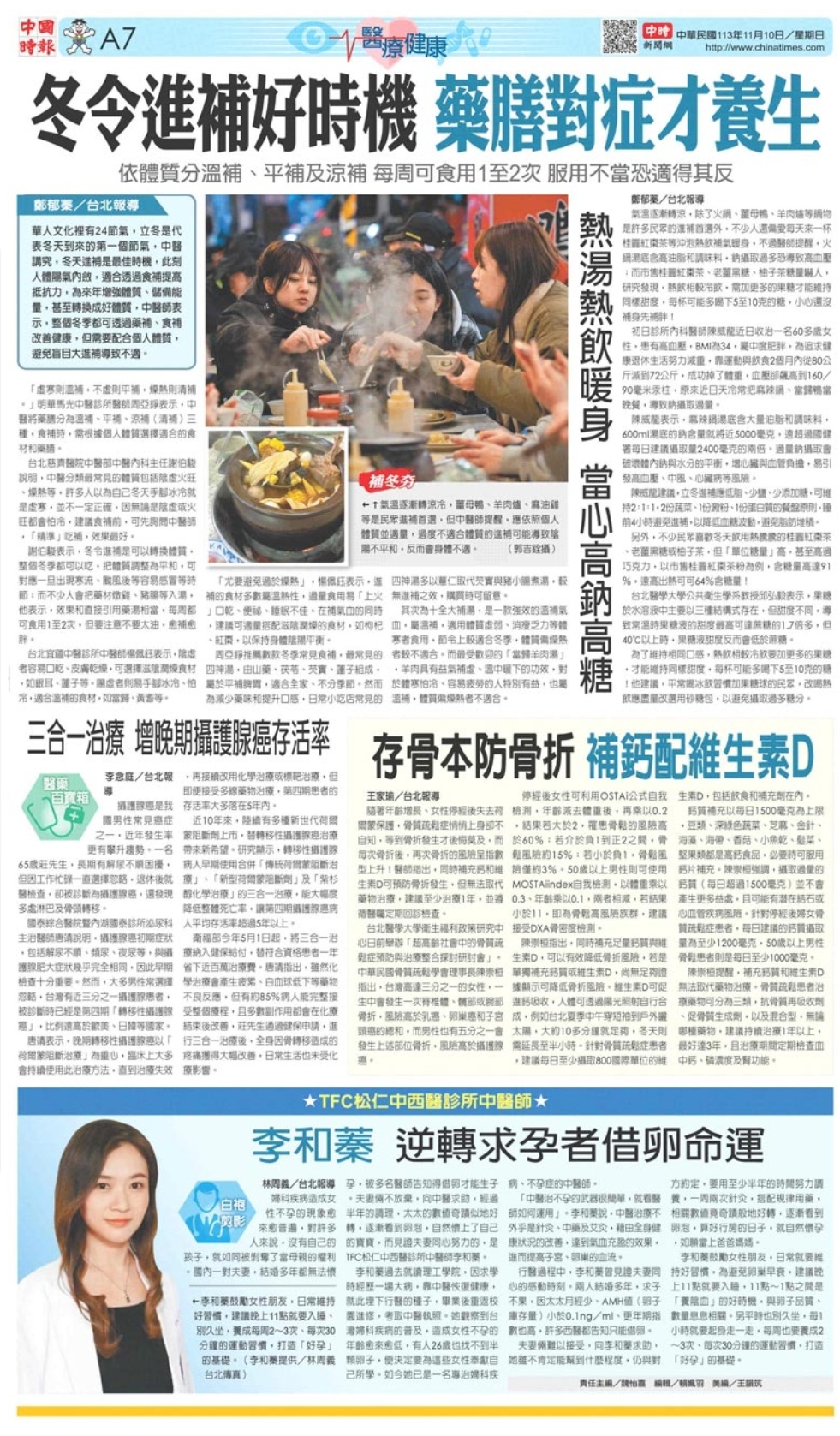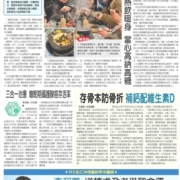【Media Report】Seminar on the Prevention and Integrated Treatment of Osteoporosis in a Super-Aged Society – China Times, “Building Bone Reserves to Prevent Fractures: Calcium and Vitamin D Supplementation”

As people age and women lose hormonal protection after menopause, osteoporosis can quietly set in without notice. Many realize only after a fracture occurs, at which point the risk of recurrent fractures increases exponentially. Doctors point out that supplementing with both calcium and vitamin D can help prevent fractures but cannot replace medical treatment. They recommend at least one year of treatment and regular follow-ups as advised by medical professionals.
The Health Welfare Policy Research Center at Taipei Medical University recently held a seminar titled “The Prevention and Integrated Treatment of Osteoporosis in a Super-Aged Society.” Dr. Chen Chong-Huan, Chairman of the Taiwan Osteoporosis Association, highlighted that one-third of women in Taiwan will experience a spinal, hip, or wrist fracture in their lifetime—a risk higher than the combined risks of breast, ovarian, and cervical cancers. Similarly, one-fifth of men will experience fractures in these areas, with a risk higher than that of prostate cancer.
Postmenopausal women can use the OSTA (Osteoporosis Self-Assessment Tool for Asians) formula for self-assessment: subtract weight from age, multiply by 0.2, and if the result is over 2, the risk of osteoporosis is over 60%; between -1 and 2, the risk is around 15%; below -1, the risk is only about 3%. Men over 50 can use the MOSTAi index for self-assessment: multiply weight by 0.3, subtract age multiplied by 0.1, and if the result is less than 11, they are at high risk for osteoporosis and should consider a DXA bone density test.
Dr. Chen pointed out that supplementing with sufficient calcium and vitamin D together effectively reduces fracture risk. However, there is no conclusive evidence that taking calcium or vitamin D alone can lower fracture risk. Vitamin D aids calcium absorption, and the body can produce it through sunlight exposure. For instance, in Taipei’s summer, exposing one’s arms outdoors at noon for about 10 minutes is sufficient; in winter, it may require up to 30 minutes. For osteoporosis patients, a daily intake of at least 800 IU of vitamin D, from both diet and supplements, is recommended.
The upper limit for calcium intake is 1,500 mg per day. Foods rich in calcium include beans, dark green vegetables, sesame seeds, dried daylily, seaweed, mushrooms, small dried fish, hair moss, and nuts. Calcium tablets can be taken if necessary. Dr. Chen emphasized that consuming more than 1,500 mg of calcium per day does not provide additional benefits and may carry risks such as kidney stones or cardiovascular issues. For postmenopausal women with osteoporosis, a daily calcium intake of at least 1,200 mg is recommended; for men over 50 with osteoporosis, at least 1,000 mg per day is advised.
Dr. Chen cautioned that calcium and vitamin D supplementation cannot replace medication. Osteoporosis treatments fall into three categories: anti-resorptive agents, bone formation agents, and combination therapies. Whichever treatment is chosen, it is recommended to continue for over a year, ideally for three years, with regular monitoring of blood calcium, phosphorus levels, and kidney function during treatment.
Original Source: China Times, “Building Bone Reserves to Prevent Fractures: Calcium and Vitamin D Supplementation”



